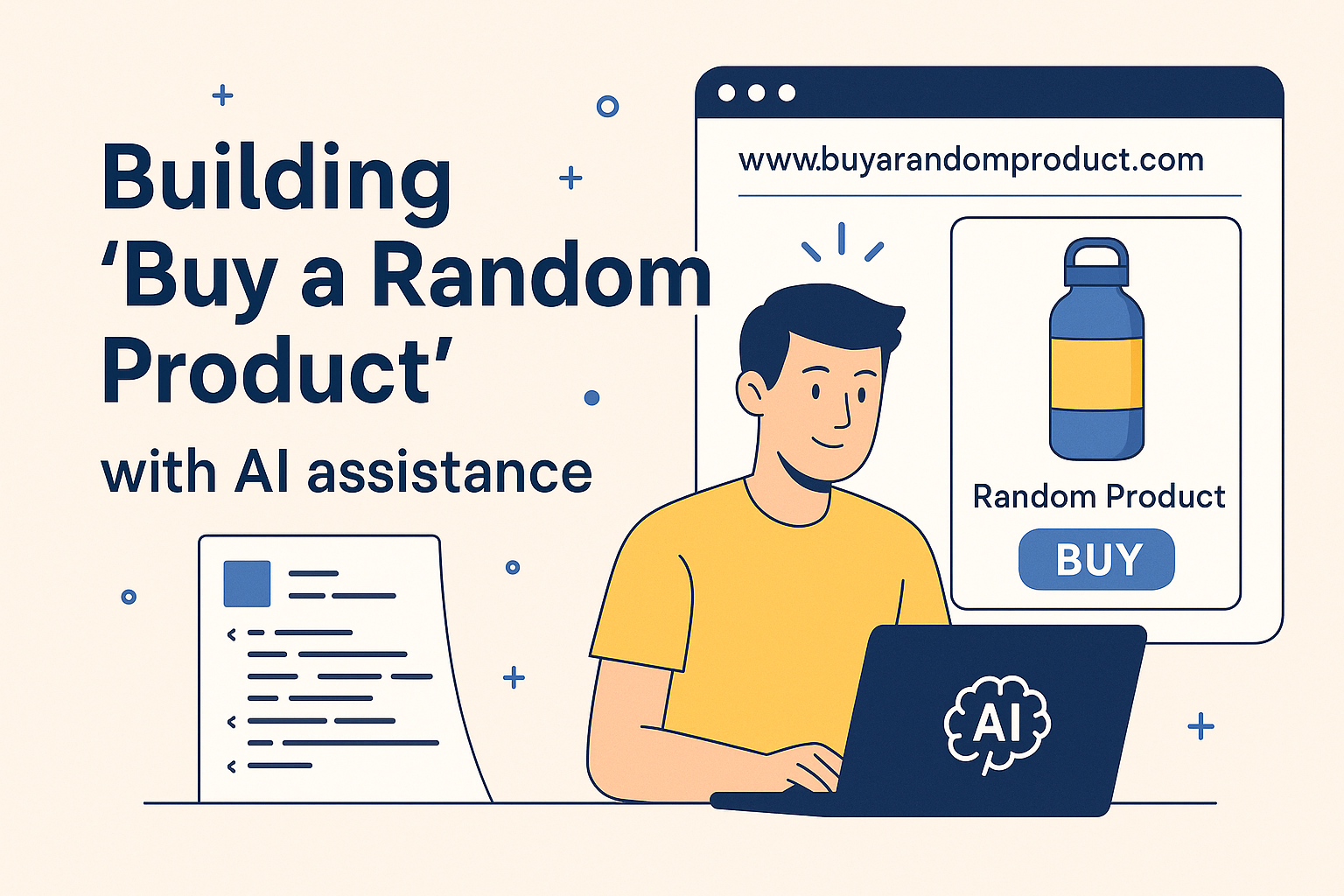Ever wonder what you’d get if you let the internet decide your next Amazon purchase? That’s the idea behind Buy a Random Product—a website I built over the course of three weeks with the help of an AI-powered IDE called Windsurf, running on the Sonnet 3.7 model.
It’s simple: you click a button, and we surface a truly random Amazon product. Could be brilliant. Could be bananas. That’s the fun.
Where It All Started
The concept was straightforward: create a lightweight site that fetches and displays a random Amazon product. But behind the scenes, there’s quite a bit going on—from API limitations and caching strategies to AWS infrastructure and SEO optimization. I partnered with AI to move fast, stay focused, and build something functional and fun.
The Stack (and the Setup)
Here’s a quick look at the architecture:
- Frontend: Hosted on AWS S3 with CloudFront CDN
- Backend: AWS Lambda, responsible for fetching product data
- API: Integrated with Amazon’s Product Advertising API
- Caching: Implemented to reduce API hits and handle rate limits
The AI assistant walked me through setting up S3 buckets, CloudFront distributions, IAM roles, Lambda deployments, and even helped write reusable deployment scripts. This part alone might’ve taken 20+ hours solo—but AI cut that down significantly.
Integrating with Amazon’s API (AKA The Tricky Bit)
Amazon’s Product Advertising API isn’t the most intuitive thing in the world. The AI helped me implement:
- AWS Signature Version 4 authentication
- Randomized product fetch logic
- Error handling for rate limits and malformed responses
- Logic to filter out irrelevant or low-quality products
And when the API served up weird results (think $0.00 items or unavailable products), we got creative: pulling fallback ASINs from my personal order history and filtering product categories that just didn’t belong (sorry, grocery aisle).
Smarter Caching = Faster Results
With Amazon’s API rate-limiting us, caching became essential. So we:
- Built a cache warmer script to pre-fetch and store products
- Designed the Lambda to prioritize cached results
- Validated cached items before serving them to users
The AI helped structure all of this, including a system for quality scoring cached products and refreshing stale entries. The result? A faster, more reliable experience for the user.
Debugging, Scaling, and Real-World Problem Solving
Of course, not everything went smoothly. Along the way, we tackled:
- Lambda cold start issues
- CORS configuration headaches
- Broken URL validation for Amazon links
- Annoying 403 errors from the API when we forgot to sign requests correctly
But every hiccup became a chance to learn—and with the AI co-pilot’s guidance, I was rarely stuck for long.
SEO, Ads, and the Fun Stuff
Once the core site worked, I shifted focus to growth and monetization:
- Added meta tags, robots.txt, and structured data for SEO
- Used the AI to auto-generate optimized sitemap.xml
- Integrated Google AdSense
- Configured CloudFront invalidations to reflect updates instantly
Small changes, big impact. Especially when your site lives or dies by discoverability.
What I Learned (and What You Might Too)
This wasn’t just a code sprint—it was a crash course in the future of development:
- AI helps you move faster—but you still have to know where you’re going.
- Iterate, don’t overthink—shipping early helped uncover bugs we wouldn’t have seen otherwise.
- Fallbacks matter—a good product should still work when APIs fail.
- Simplicity wins—trimming complexity led to better uptime and easier debugging.
In total, the project took maybe 20 focused hours spread over three weeks. Without AI, I’m confident it would’ve dragged into months.
Final Thoughts
Buy a Random Product was a fun side project—but more than that, it was a proof of concept. Not just for a quirky idea, but for how far you can take AI-assisted software development today. From writing infrastructure as code to debugging production issues and optimizing SEO, the AI was a powerful partner.
You still need vision. You still need judgment. But with tools like Windsurf and Sonnet 3.7, you can build fast—and have fun doing it.
Now go click the button. See what you get.

Leave a Reply